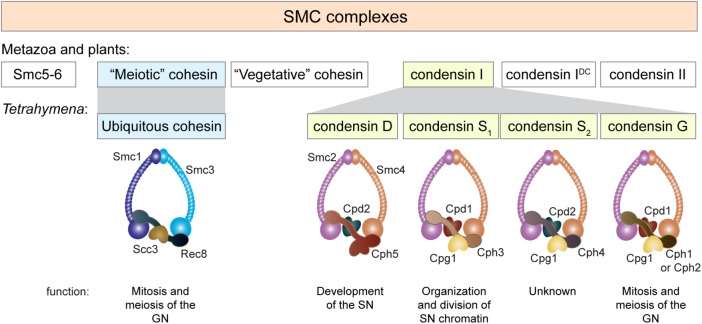FIGURE 9:
Reduction and radiation of SMC complexes in Tetrahymena. Three types of SMC complexes have evolved in fungi, metazoa, and plants: the DNA repair complex Smc5/6, cohesin, and condensin. Cohesins are further classified into complexes specialized for either meiosis or vegetative growth. Condensin has also duplicated and diverged to form condensins I and II, and in the case of C. elegans, condensin IDC. Tetrahymena may have started with a reduced set of SMC complexes, containing only cohesin and condensin I. Its cohesin more closely resembles the meiotic cohesin of the other eukaryote groups and did not further diverge. The non-SMC subunits of the condensin complex subsequently multiplied into diverse forms with different and specific nuclear functions. The distinct complexes seem to be largely defined by the kleisin/Cph subunit. The GN employs condensin G, with Cph1 and Cph2 being partially redundant. Although the localization of Cph3, Cph4, and Cph5 is overlapping in the SN, Cph3 (condensin S1) is required for chromosome division, Cph4 (condensin S2) has an as-yet unknown function, and Cph5 (condensin D) participates in development of the SN.

